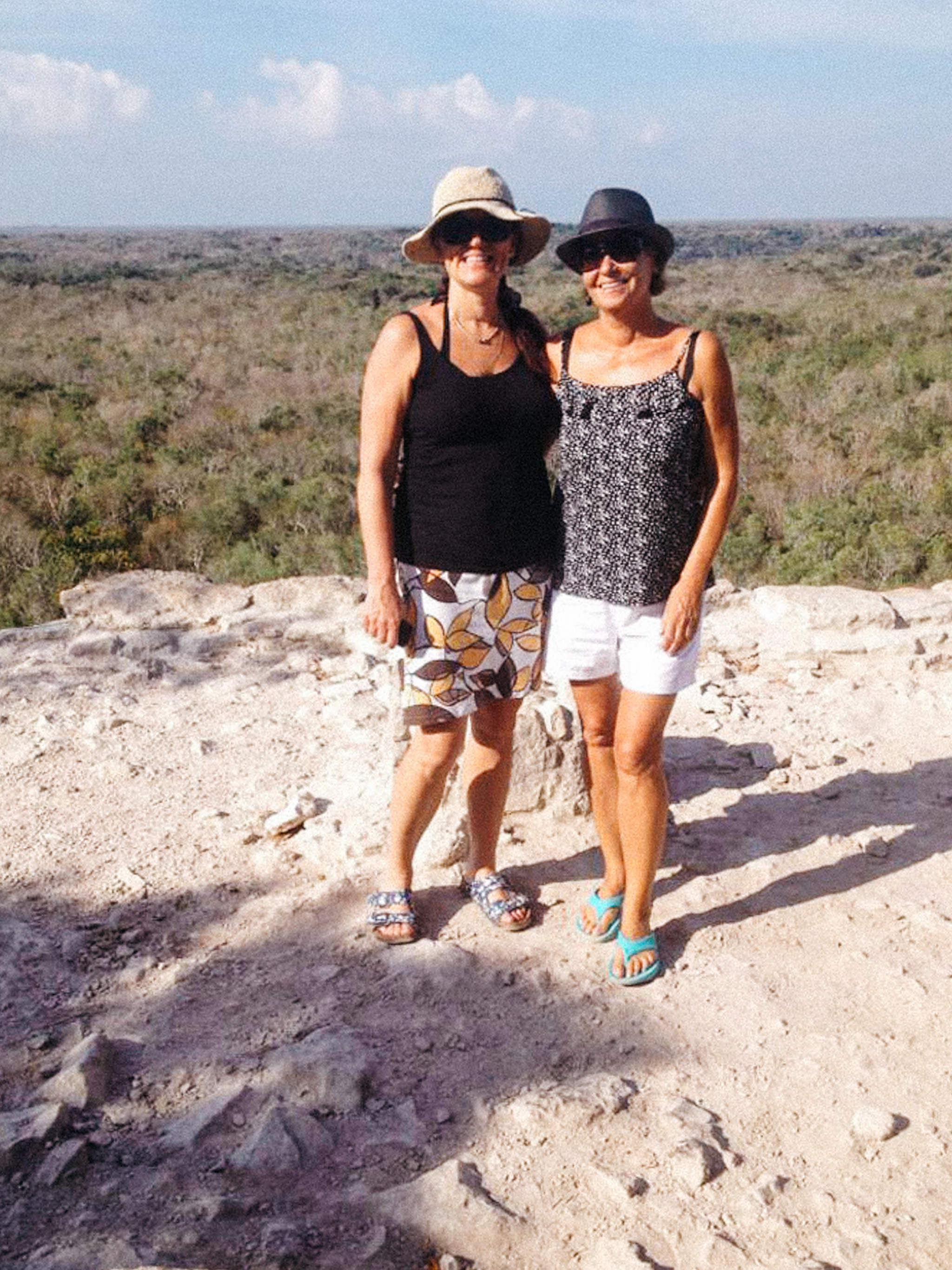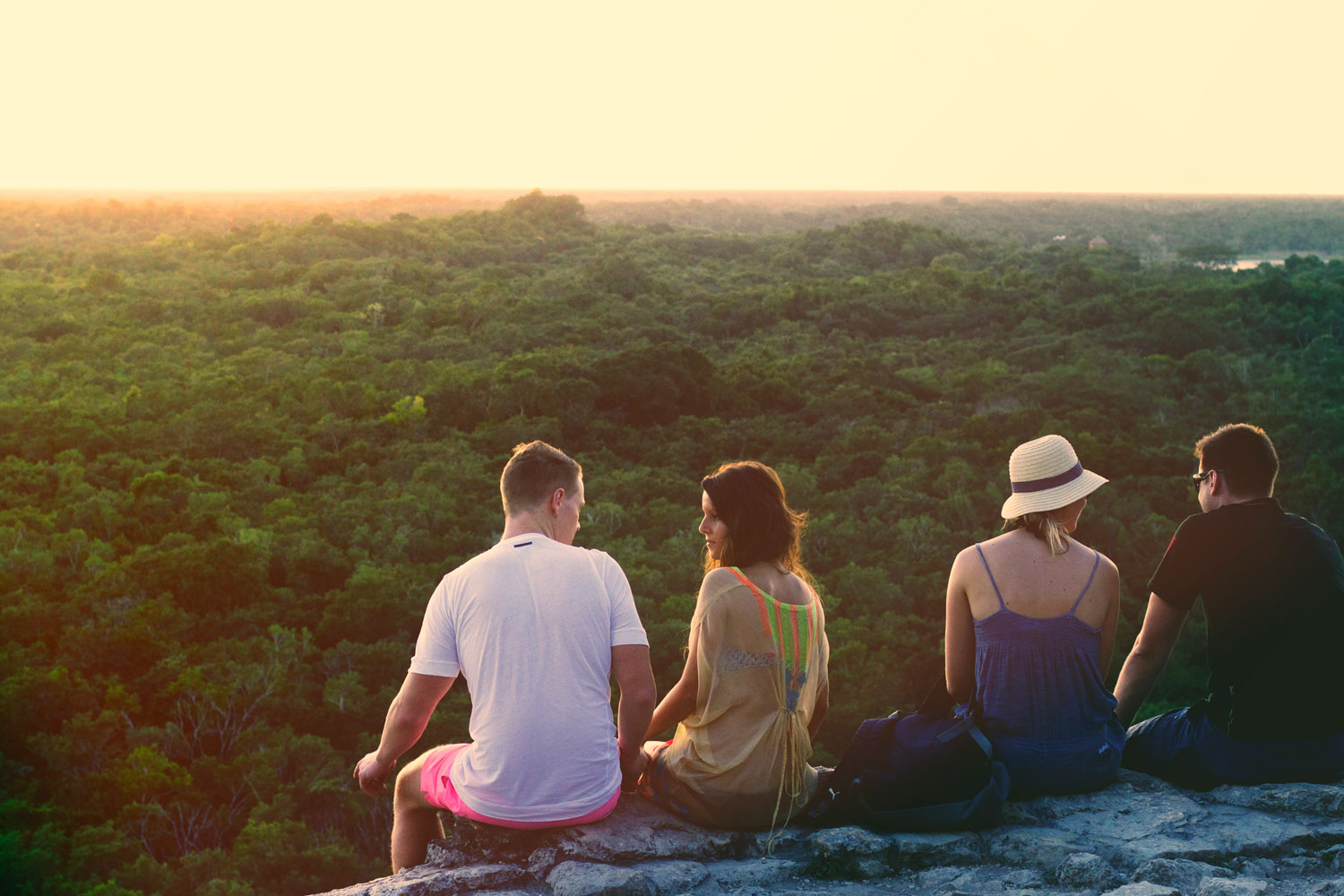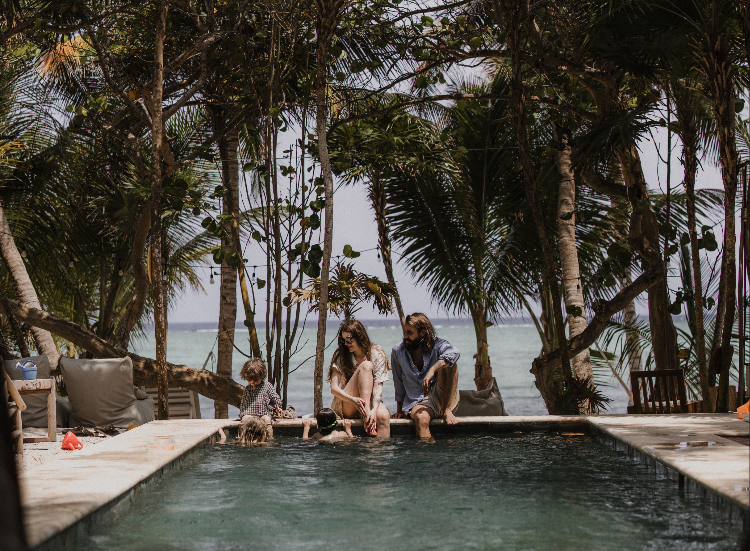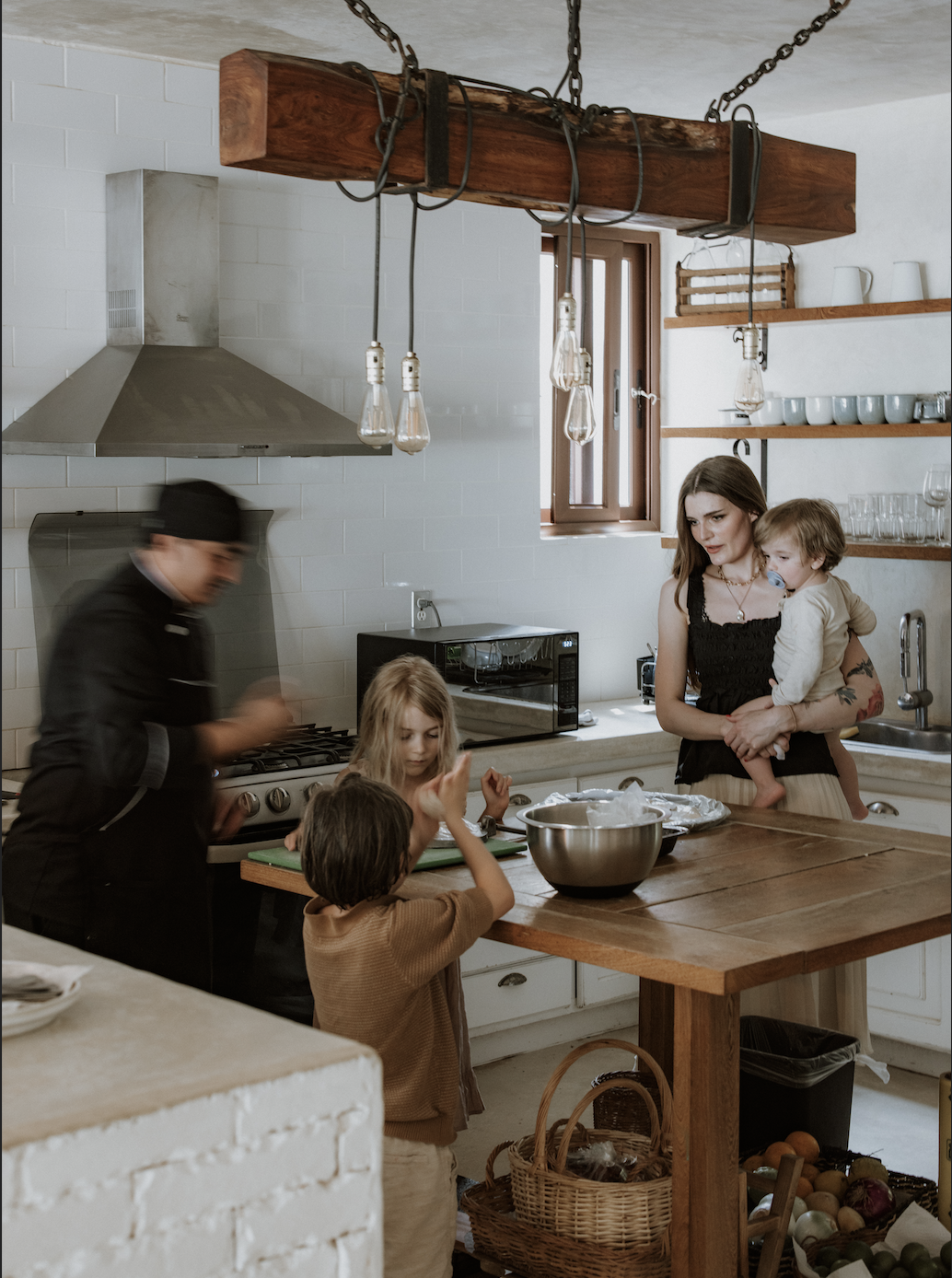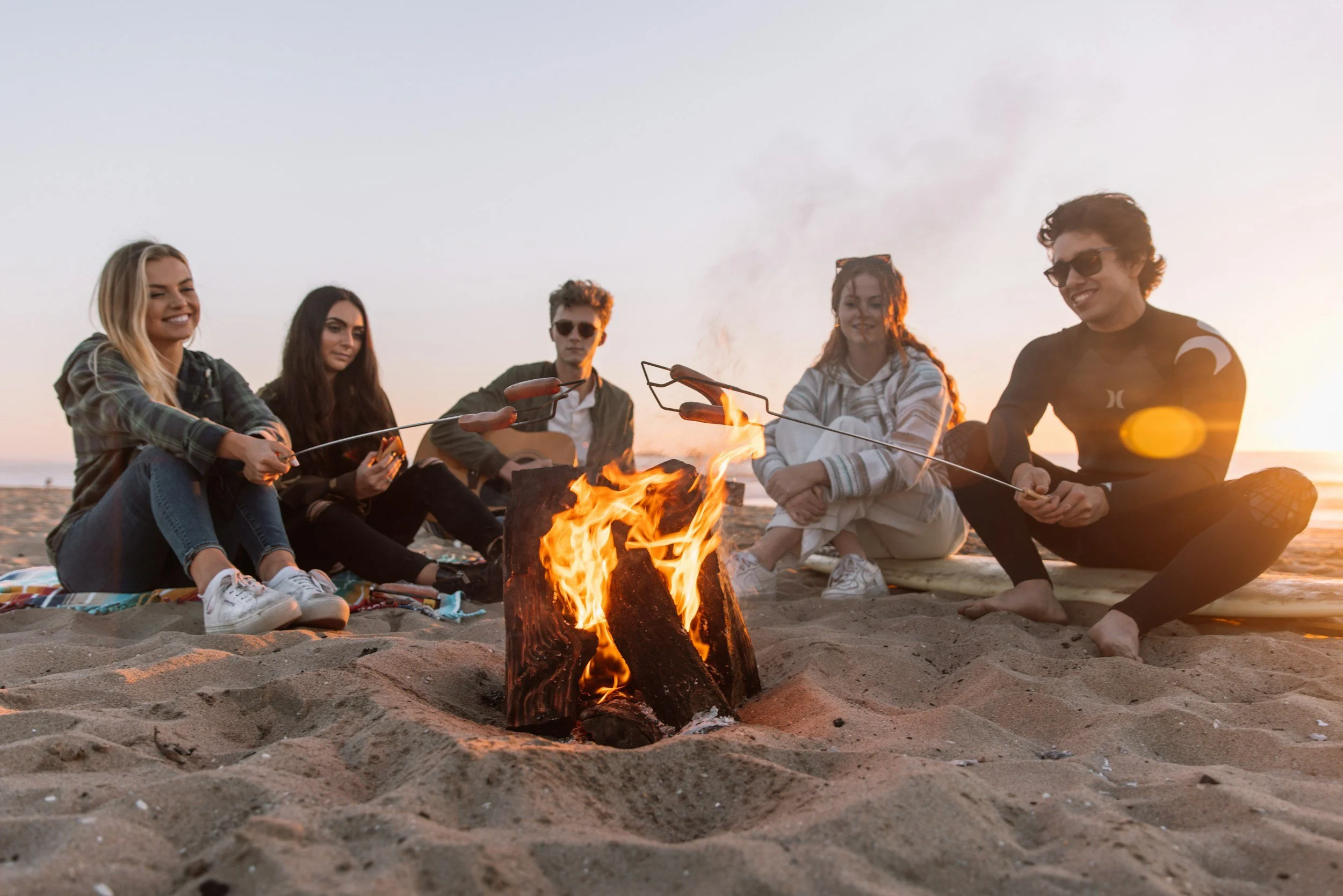The Queens of Cobá: Atop The Tallest Temple
Written by Lydia Jones
Ready for an Indiana Jones adventure and a bit of mystery? For thrills, great views and total self-satisfaction, climb Cobá's steep pyramid of Nohoch Mul. For mystery, find its best-kept secret hidden below in the jungle: ancient female power!
Yes, it was a city ruled by queens, rare in the ancient Maya lands. Explore that fact first-hand. I'll guide you, because it's complicated.
The daughters of the Tikal kings (Guatemala) and the Snake Kingdom of Calakmul (Mexico) are said to have often married into the Cobá nobility, bringing their own artists and architects, so Cobá looks a bit like Tikal. They also seem to have had higher social status than the men they married, so they were queens in their own right, not the consorts of kings. Certainly Cobá recorded an unusual number of female rulers.
On top of the pyramid, 2014. On the right: with my sister, 2015.
Many of the stelae (stone slabs with royal portraits) found at Cobá date to the late sixth century, indicating that this was a period of considerable prosperity. The rulers were given the title kaloomte', supreme ruler, the highest title known to the Classic Maya. So what demonstrates that the rulers in Cobá were queens in their own right?
Go to the Macanxoc Group (east of Lake Macanxoc) where most of the stelae are gathered. Tatiana Proskouriakoff notes that five of the nine portraits here are of women: the front and back of Stela 1, Stela 2, 4, and the back of 5. Also check Stelae 29 and 30 in group D. The rest portray male rulers. But how can we possibly tell a king from a queen on a badly eroded carving? They wear very similar ornaments.
Rosemary Joyce demonstrates that women seldom appear as the sole subjects of statuary; they are usually paired with men, as royal couples. Double-sided stelae were set around the plaza with the female facing the buildings, and the male facing the open space. In Cobá, Stelae 1, 5 and 30 are double-sided.
Physically, the female figures are barely differentiated from the males. The key is the skirt; they wore ankle-length huipils, in contrast to the thigh-length skirts and loincloths worn by the male figures on Stelae 3, 6 and 8 and the front of Stela 5. So if you can see their knees, they're men.
Simple? Well, not entirely! Some researchers argue that Maya kings would sometimes dress as females. For example, Stela H from Copán (Honduras) could be a king in a long skirt, demonstrating his ability to transcend gender and return to a primordial dual condition – finding his feminine side.
Let's try their belts. Joyce Marcus believes that females wore belts with fish and shells to symbolize water, while males wore belts with jade masks covering the loins. This is hard to see on the eroded stones. Believe me, I've looked!
How about net overskirts? To confuse the issue, both kings and queens often wore them with a diamond design of interlocking jade tubes and beads. The net symbolised fertility, associated with the powerful myth of the death and rebirth of the Maize God, who created mankind from maize, and added his own blood.
Who was the ruler on Stela 1? She is wearing a long skirt with latticework (on the underskirt only). The soft Yucatán limestone is so eroded that we just have 'Lady [Someone], Supreme Ruler'. David Stuart calls her Lady K’awiil Ajaw, and we know she ruled as the kaloomte' of Cobá between 642 and 682 AD. She is portrayed on both the front and back of the stela. The same queen appears on Stelae 2, 4 and the back of 5 (the front has a male ruler, possibly her husband). The fact that she appears alone on most of her monuments indicates she was queen of Cobá in her own right (not as a consort).
Another queen from the end of the 6th century appears on Stelae 29 and 30 in Group D, wearing a long skirt, and dated 573 and 578 AD.
There was also apparently an earlier Lady K’awiil Ajaw, also a kaloomte’, who is considered the founder of the Cobá dynasty, ruling sometime between 450-525 AD. No other Maya kingdom was founded by a woman with this title, which suggests Cobá was an imperial power.
It would make sense if the later queen took the same name, reflecting her illustrious ancestry. On her stelae, she stands over more than a dozen captives, more than any other Maya queen and most Maya kings. She may have not fought herself, but she certainly had warriors in her service. Cobá’s earlier military expansion included the conquest of Yaxuná between 550 and 600. The queen was not responsible for that, but she may have consolidated the gains, because the famous Cobá-Yaxuná causeway called sacbé (white limestone road), 100km long, was likely built during her forty-year reign, after the war. It is still visible; do check it out.
After her death, Cobá's kings were captured in wars with Tikal and Edzná, where carved texts refer to 'He of Cobá'; Cobá lost control of their outposts. This further indicates the power of Lady K’awiil Ajaw's earlier reign and how it must have been seen as a 'golden age' by later generations.



